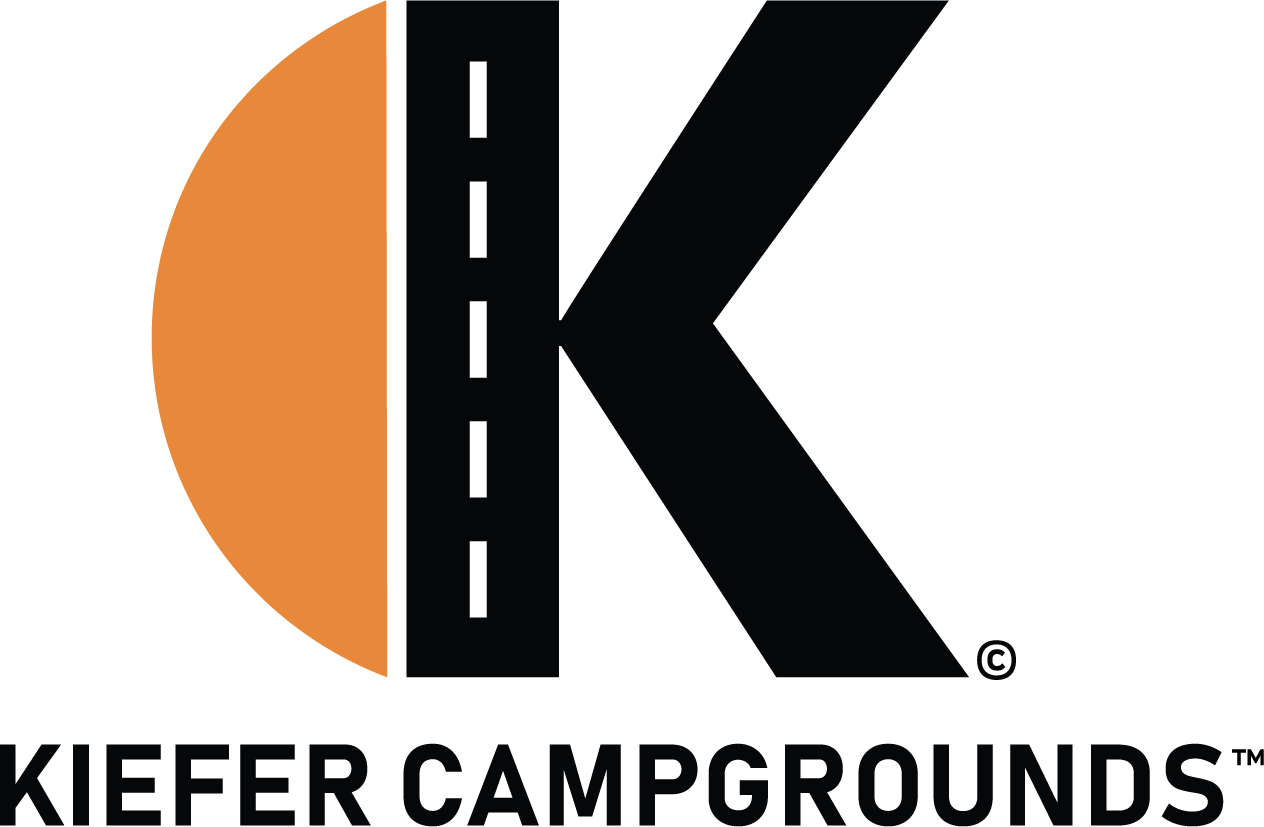Heres Some Camping Tips & Tricks at Your Fingertips
Our Kiefer Campground Blog is the information you need to make your next camping trip even more enjoyable. From RV and camping tips and tricks, to amazing campfire recipes, to advice on planning your next trip... the information below is here to help you. And please, feel free to comment and share your experiences, knowledge and favorite recipes. At Kiefer Campground, we are a family and all here to help each other enjoy the great outdoors to the fullest!
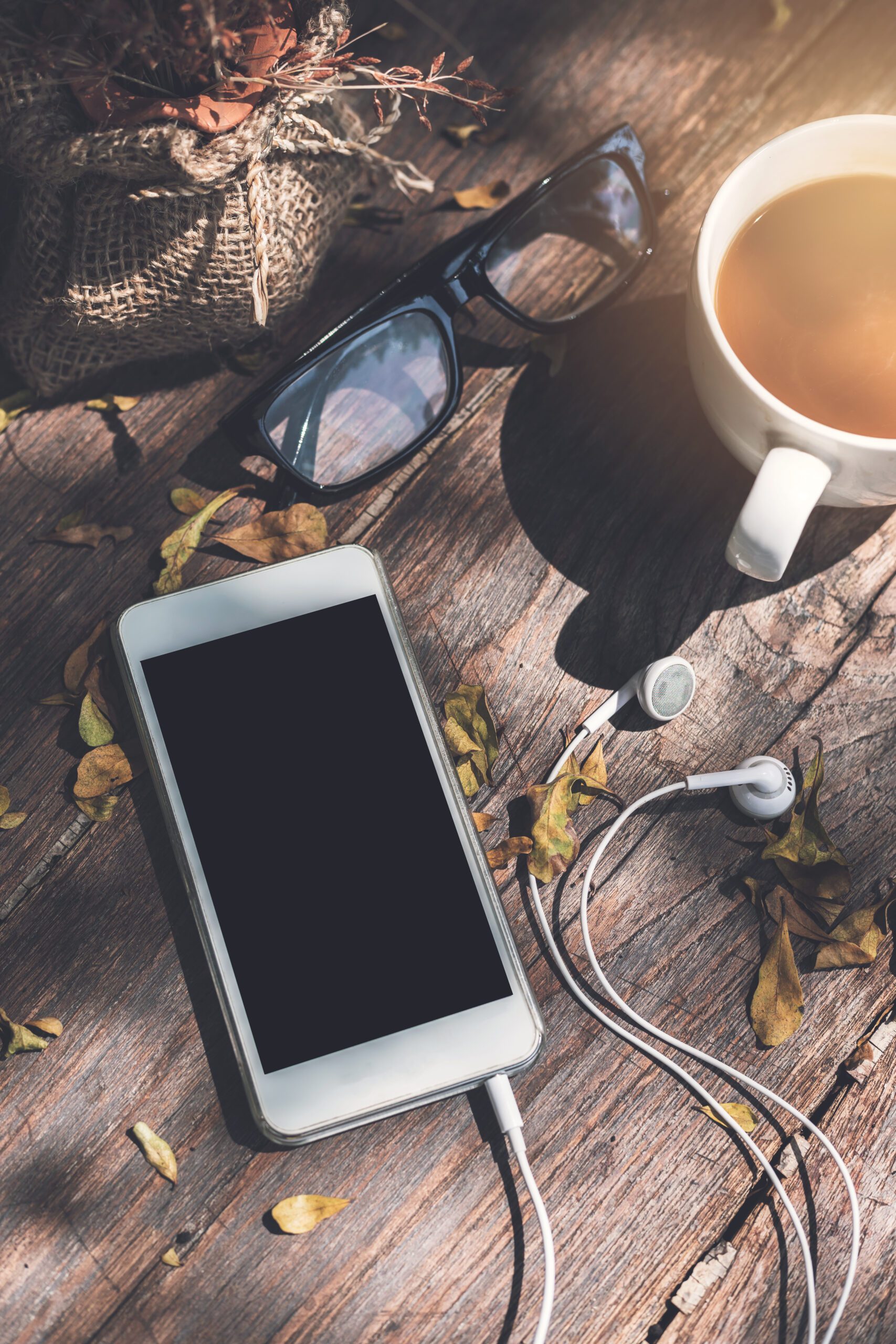
How to Have an Unplugged Experience While Camping
Camping offers a wonderful opportunity to disconnect from technology and reconnect with nature, yourself, and your loved ones. Here are some tips to help you have a truly unplugged camping experience:
1. Plan Ahead
Before your trip, inform friends, family, or coworkers that you will be unavailable. Set an “out of office” message on your email and communicate your plans to avoid any last-minute emergencies requiring your attention.
2. Leave Electronics at Home
If possible, leave your devices behind or store them in your car. If you need a phone for emergencies, keep it powered off or in airplane mode to resist the temptation of using it for non-essential purposes.
3. Embrace Nature’s Entertainment
Replace screen time with outdoor activities. Bring along hiking gear, fishing equipment, or binoculars for birdwatching. Plan stargazing sessions or explore the area with a nature guidebook to learn about local flora and fauna.
4. Bring Analog Alternatives
Instead of relying on digital devices, pack:
- Maps and compasses for navigation
- Books or magazines for reading
- A journal for writing or sketching
- Board games or card games for entertainment
5. Engage in Mindful Activities
Take time to immerse yourself in the environment. Practice mindfulness by:
- Watching the sunrise or sunset
- Listening to the sounds of nature
- Meditating or practicing yoga outdoors
6. Create Tech-Free Zones
If camping with others, establish a rule that the campsite is a “tech-free zone.” Agree on specific times for checking devices if absolutely necessary and encourage each other to stick to the commitment.
7. Focus on Connection
Use your time to bond with your companions. Share stories around the campfire, cook meals together, or participate in group activities like scavenger hunts or team sports.
8. Prepare for Idle Moments
Boredom can be a challenge if you’re used to constant stimulation. Plan activities such as:
- Crafting projects like whittling or making leaf prints
- Building a nature mandala with stones, leaves, and flowers
- Writing letters to friends and family
9. Respect the Environment
Without the distraction of devices, you may notice details about the natural world you’d otherwise overlook. Take this time to learn about Leave No Trace principles and practice sustainable camping habits.
10. Reflect on the Experience
As your trip concludes, spend some time reflecting on how it felt to be unplugged. Consider journaling about the experience or discussing it with your camping companions. You might find yourself inspired to incorporate more unplugged moments into your daily life.
By consciously choosing to unplug while camping, you can create lasting memories and truly appreciate the beauty and tranquility of the great outdoors while staying at Kiefer Campgrounds!
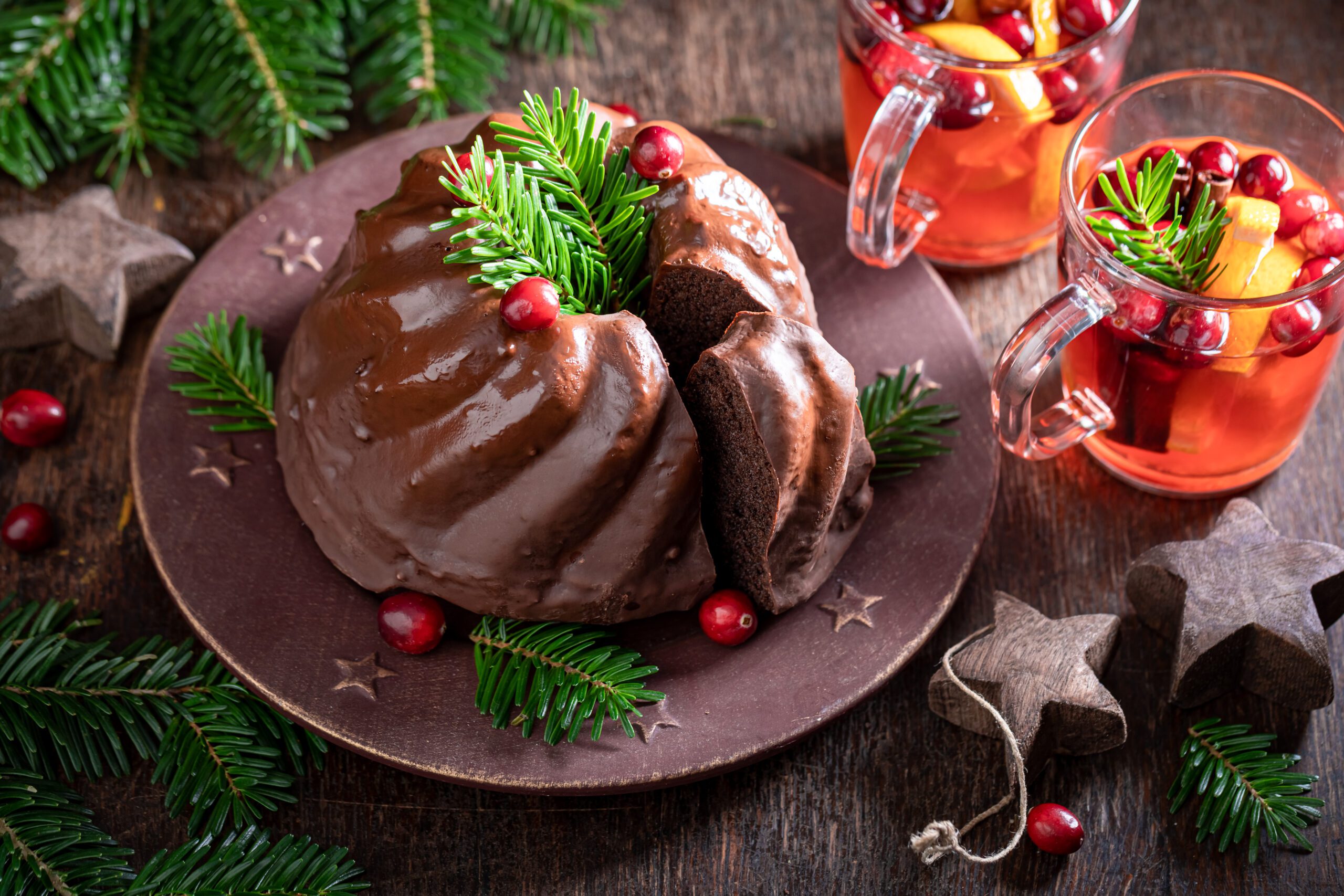
Campfire Christmas Pudding
Here’s a festive recipe that’s easy to make and perfect for enjoying the holiday spirit outdoors:
Ingredients:
- 200g (7 oz) mixed dried fruits (e.g., raisins, sultanas, chopped apricots, or cranberries)
- 50g (2 oz) chopped nuts (e.g., walnuts or almonds)
- 50g (2 oz) brown sugar
- 1 tsp mixed spice (or a blend of cinnamon, nutmeg, and cloves)
- 1 tbsp all-purpose flour
- 50g (2 oz) butter or margarine, melted
- 1 egg
- 1 tbsp molasses or honey
- 3 tbsp brandy or orange juice
- Optional: grated zest of 1 orange
Equipment:
- Aluminum foil
- Heatproof pudding mold or a heat-safe, lidded container
- Campfire with embers or a grill
Instructions:
- Prepare the Ingredients:
- In a mixing bowl, combine the dried fruits, nuts, sugar, and mixed spice.
- Stir in the flour, then add the melted butter, egg, molasses, and brandy (or orange juice). Mix thoroughly until well combined.
- Shape the Pudding:
- Grease your pudding mold or heat-safe container.
- Spoon the mixture into the container, pressing it down gently. Cover with a double layer of greased aluminum foil, securing it tightly.
- Cook on the Campfire:
- Place the pudding container on a grill over the campfire embers or nestle it among the coals. Avoid direct flames.
- Cook for about 1–1.5 hours, turning occasionally to ensure even cooking. The pudding should feel firm when pressed.
- Cool Slightly and Serve:
- Carefully remove the pudding from the fire and let it cool for a few minutes.
- Serve warm with custard, whipped cream, or a drizzle of brandy sauce for the ultimate holiday treat.
Enjoy your cozy campfire Christmas pudding dessert at Kiefer Campgrounds! 🎄
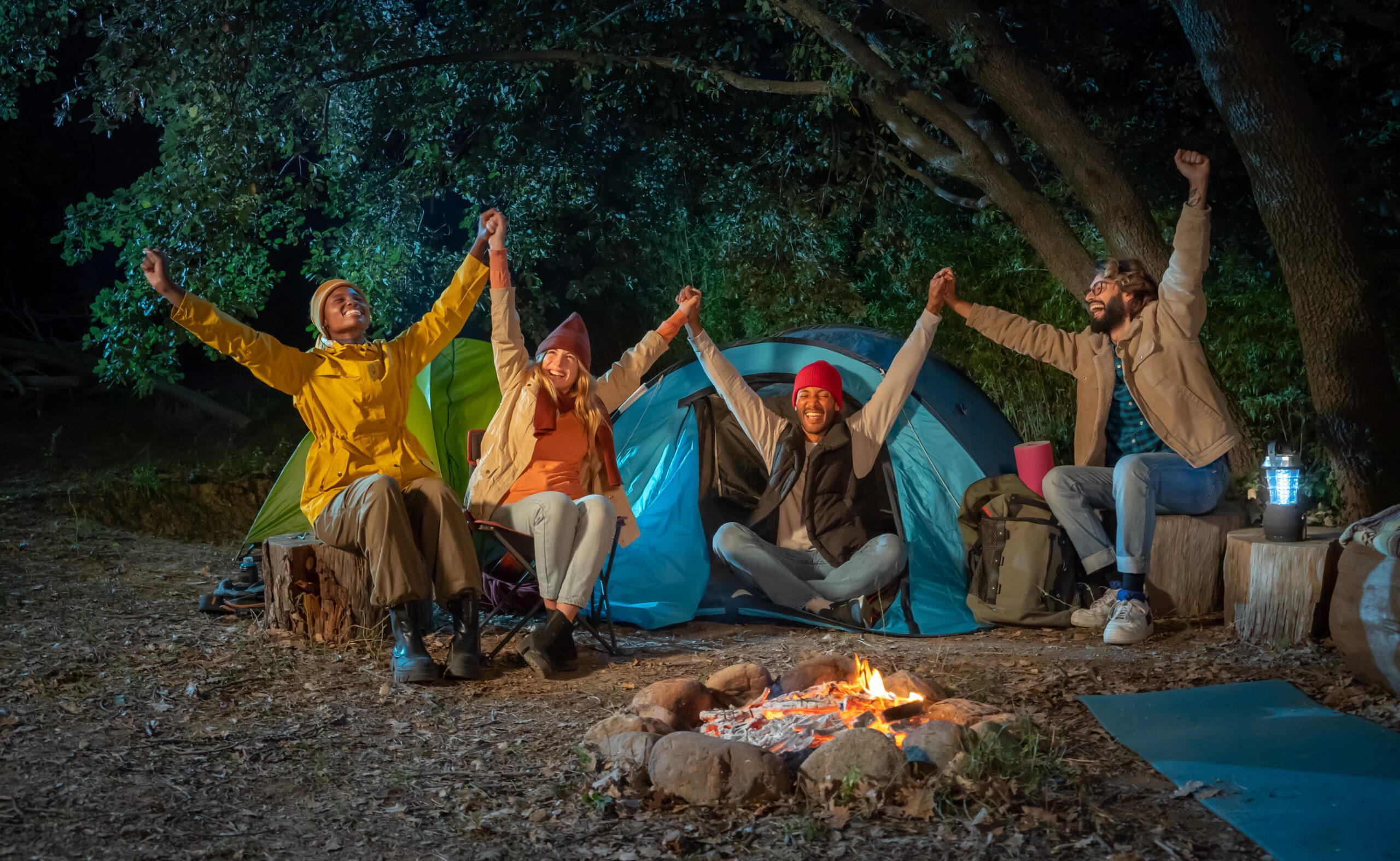
Camping Myths Debunked!
Camping is a beloved outdoor activity, but over the years, various myths and misconceptions have emerged that can make the experience seem more daunting than it really is. Let’s debunk some common camping myths:
Myth 1: You Need Expensive Gear to Enjoy Camping
- Debunked: While high-end camping gear can be helpful, it’s not a necessity for a great camping experience. Many affordable options work just as well. The key is to invest in essentials like a good tent, sleeping bag, and appropriate clothing, which can often be found at reasonable prices. Borrowing or renting gear is also a great option for beginners.
Myth 2: Camping is Dangerous
- Debunked: With proper preparation and awareness, camping is generally safe. The most common risks, such as insect bites, minor cuts, or blisters, are easily managed with a basic first-aid kit. Wildlife encounters are rare, and most animals avoid humans. Storing food properly and following campsite guidelines greatly reduces any potential dangers.
Myth 3: You Have to Eat Canned or Freeze-Dried Food
- Debunked: While these foods are convenient, you can enjoy a variety of delicious meals while camping. Many recipes, from foil packet dinners to campfire-cooked pizzas, are easy to prepare and cook over a fire or portable stove. Fresh ingredients can be brought along, especially for shorter trips, allowing you to enjoy tasty and nutritious meals in the great outdoors.
Myth 4: It’s Always Uncomfortable to Sleep Outdoors
- Debunked: With the right setup, sleeping outdoors can be comfortable and even enjoyable. A quality sleeping pad or air mattress can make a big difference, and choosing the right sleeping bag for the weather ensures you stay warm or cool as needed. Earplugs and an eye mask can help block out unwanted noise and light for a better night’s sleep.
Myth 5: Campfires Are Essential for Camping
- Debunked: While campfires are a classic part of camping, they aren’t always necessary or allowed, especially in areas prone to wildfires. Portable stoves and lanterns can provide the necessary cooking and lighting without the need for a fire. If a campfire is permitted, it’s important to know how to build and extinguish it safely.
Myth 6: Camping is Just for Roughing It
- Debunked: Camping doesn’t have to mean giving up all comforts. “Glamping” (glamorous camping) has become popular, with options like luxury tents, yurts, or cabins that offer comfortable beds, electricity, and even Wi-Fi. Even in traditional camping, you can bring along comfort items like inflatable chairs, portable showers, and cozy blankets.
Myth 7: You’ll Always Be Surrounded by Bugs
- Debunked: While bugs are part of nature, they don’t have to ruin your trip. Proper planning can minimize exposure, such as choosing campsites away from stagnant water, wearing insect repellent, and using screens or netting. Modern tents often come with built-in bug protection, and certain times of the year or day are less buggy than others.
Myth 8: Camping is Only for the Summer
- Debunked: Camping can be enjoyed year-round with the right preparation. Spring and fall offer mild temperatures and beautiful scenery, while winter camping provides solitude and unique experiences like snowshoeing or ice fishing. Cold-weather gear and proper planning are key to staying warm and safe during off-season camping.
Myth 9: You Have to Hike Far to Camp
- Debunked: While backpacking involves hiking to a campsite, many campgrounds offer drive-up sites where you can park right next to your tent. This makes camping accessible for people of all ages and fitness levels, and you can still enjoy nature without the need for a strenuous hike.
Myth 10: Camping is Too Much Work
- Debunked: Camping can be as simple or as involved as you like. Some people enjoy planning and setting up elaborate campsites, but it’s also possible to have a low-effort, relaxing trip. Car camping, where you have access to your vehicle and amenities, is a great way to ease into camping without a lot of effort.
These myths can discourage people from trying camping, but with the right mindset and preparation, camping can be an enjoyable and rewarding experience for everyone, especially at Kiefer Campgrounds!
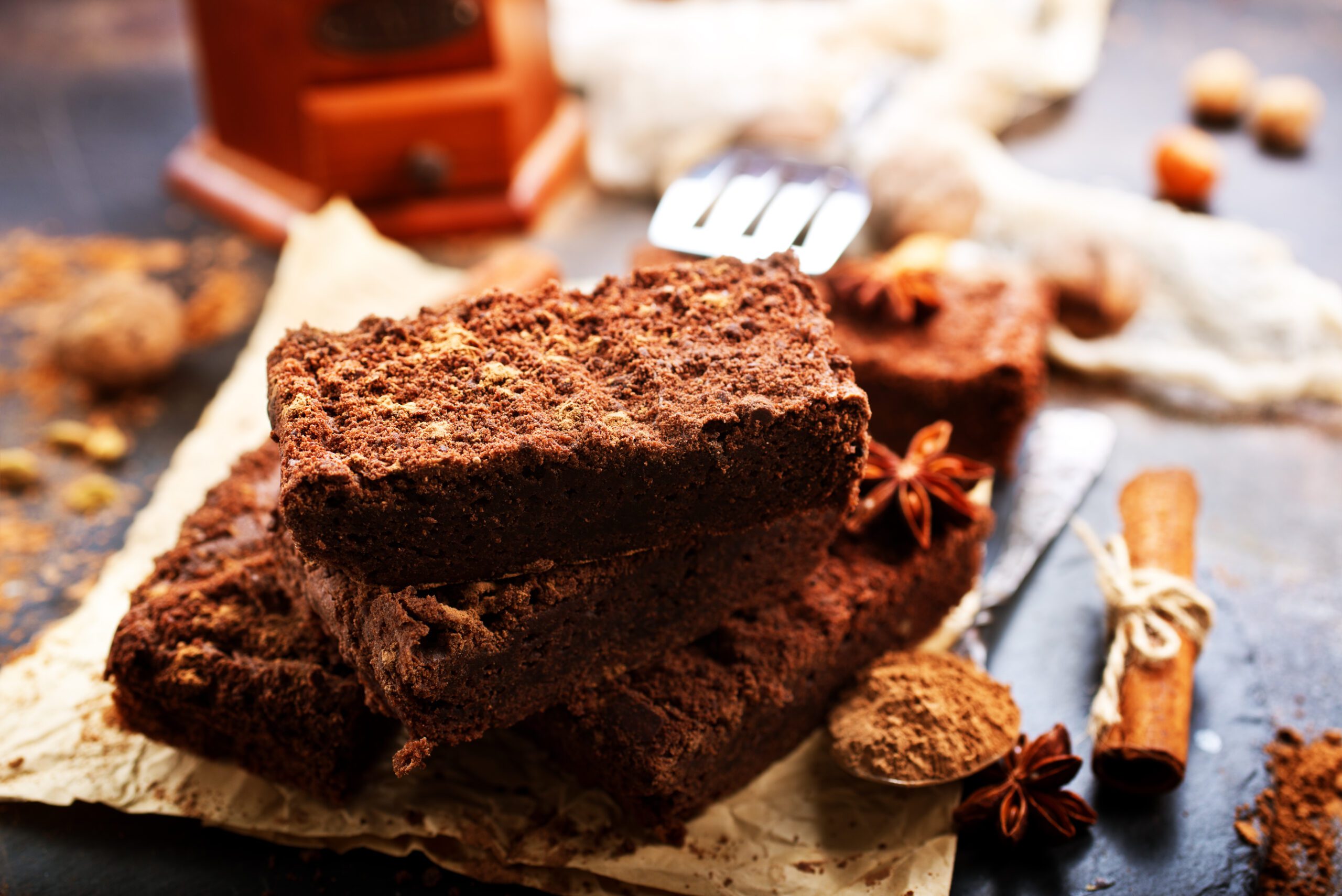
Chai-Spiced Brownies
Ingredients
- For the Brownies:
- 1 cup unsalted butter (melted)
- 1 cup granulated sugar
- 1 cup brown sugar, packed
- 4 large eggs
- 2 tsp vanilla extract
- 1 cup all-purpose flour
- 1 cup unsweetened cocoa powder
- ½ tsp salt
- For the Chai Spice Mix:
- 2 tsp ground cinnamon
- 1 tsp ground ginger
- 1 tsp ground cardamom
- ½ tsp ground cloves
- ½ tsp ground nutmeg
- ¼ tsp ground allspice
- ¼ tsp ground black pepper (optional, for a bit of warmth)
Instructions
- Preheat Oven: Preheat your oven to 350°F (175°C). Grease and line an 8×8-inch baking pan with parchment paper.
- Make the Chai Spice Mix: In a small bowl, mix together the spices for the chai blend.
- Prepare the Batter:
- In a large mixing bowl, combine the melted butter, granulated sugar, and brown sugar. Whisk until smooth.
- Add the eggs one at a time, whisking well after each addition. Stir in the vanilla extract.
- Add the Dry Ingredients:
- In a separate bowl, sift together the flour, cocoa powder, salt, and 2 teaspoons of the chai spice mix. Gently fold the dry ingredients into the wet ingredients until just combined. Avoid overmixing.
- Bake:
- Pour the batter into the prepared baking pan, spreading it evenly. Sprinkle a little extra chai spice on top if desired.
- Bake for 30-35 minutes, or until a toothpick inserted into the center comes out with a few moist crumbs (avoid overbaking to keep the brownies fudgy).
- Cool and Serve: Allow the brownies to cool in the pan before slicing. Enjoy warm with a dollop of whipped cream or a dusting of powdered sugar.
These brownies pair beautifully with a cup of tea or coffee for a cozy treat while camping outdoors at Kiefer Campgrounds!
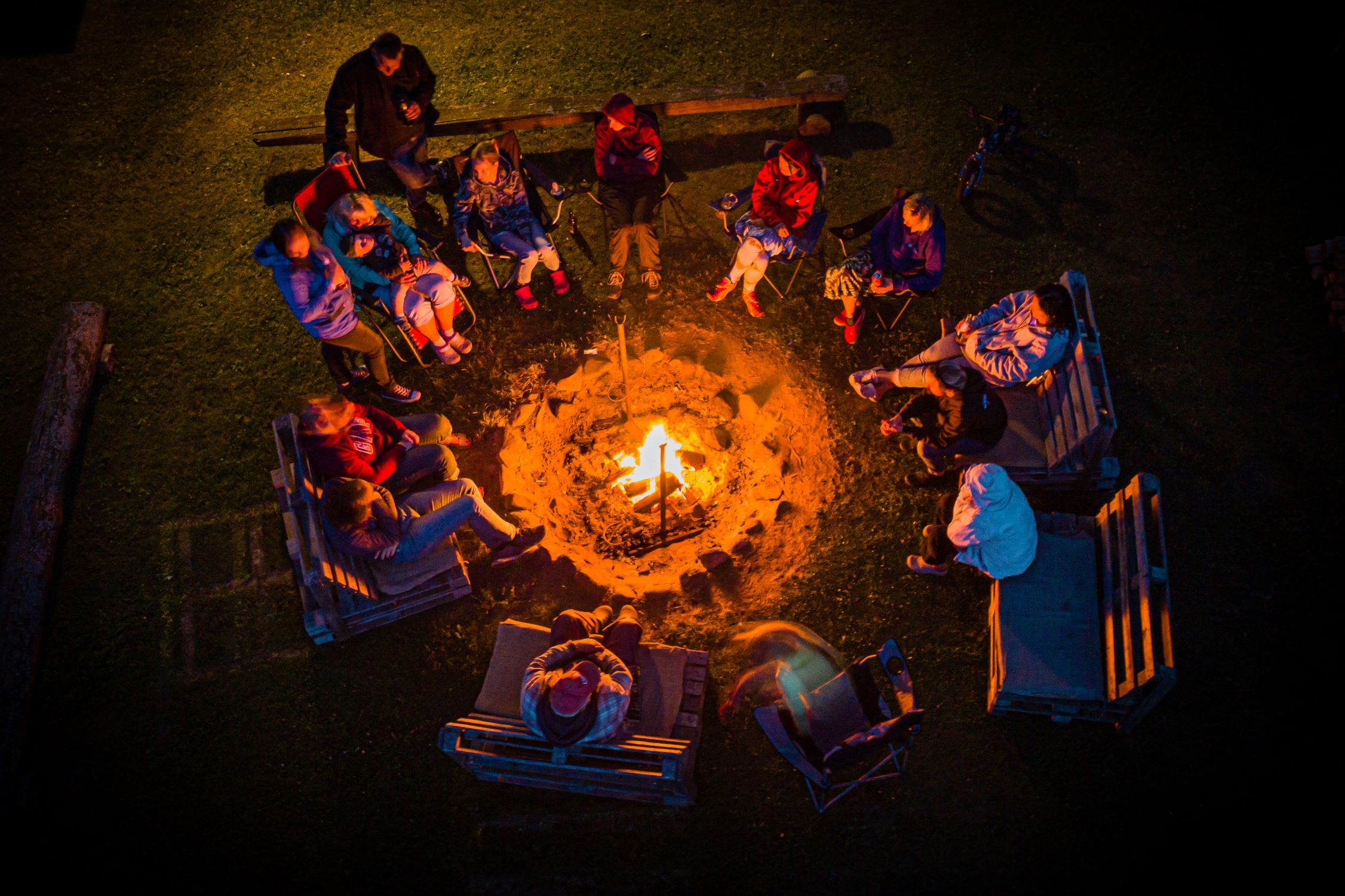
How to Make Your Own Scary Campfire Story
Creating your own scary campfire story can be a fun and memorable experience, especially when you’re trying to set the right spooky atmosphere. Here’s a step-by-step guide to help you craft a chilling tale:
1. Choose a Setting:
- Familiar but Unsettling: Pick a setting that your audience can easily imagine, like an old cabin in the woods, an abandoned campsite, or a lonely road. The closer the setting is to your actual location, the scarier it will feel.
- Time of Day: Most scary stories are set at night, but consider twilight or a stormy evening for added eeriness.
2. Create a Main Character or Group:
- Relatable Characters: Make the characters relatable—like a group of friends on a camping trip, a lone hiker, or a family. This helps your audience connect with the story.
- Flaws and Fears: Give your characters flaws or fears that can be exploited later in the story.
3. Develop the Threat:
- Supernatural or Real: Decide whether your story will involve a supernatural entity (like a ghost, monster, or curse) or a real-world threat (like a deranged person, wild animal, or natural disaster).
- Unknown Fear: The unknown is often scarier. Consider keeping the threat vague at first, hinting at it through strange noises, shadows, or unexplained occurrences.
4. Build Suspense:
- Pacing: Start slow, setting up the environment and characters, then gradually increase the tension.
- Foreshadowing: Drop subtle hints or red herrings to build suspense. For example, strange symbols carved into trees, odd behavior from animals, or locals warning the characters not to go somewhere.
- Sensory Details: Use sensory descriptions to make the audience feel like they’re in the story—describe the crunch of leaves, the chill in the air, the smell of smoke, or the sound of footsteps.
5. Introduce the Twist:
- Unexpected Turn: About halfway through, introduce a twist that changes the direction of the story. This could be the reveal of the true nature of the threat, a betrayal, or an unexpected ally turning out to be part of the danger.
- Escalating Danger: After the twist, the threat should escalate quickly. The characters might become trapped, separated, or start to turn on each other.
6. Build to the Climax:
- Face the Threat: Bring the characters face-to-face with the threat. This is where the tension is at its peak.
- Confrontation: The climax should be intense—whether the characters try to fight, escape, or hide.
7. End with Impact:
- Open-Ended or Finality: Decide whether you want your story to have a closed ending (where the threat is defeated or the characters are doomed) or an open-ended one (where the threat might still be out there, leaving your audience on edge).
- Lasting Fear: Leave your audience with a final chilling image or line, something that will stick in their minds as they sit around the campfire, like a strange noise coming from the woods or the feeling that they’re being watched.
8. Practice Your Delivery:
- Tone and Timing: Practice telling the story out loud. Use pauses, changes in tone, and lowered voice to create tension. Slow down during the buildup and quicken the pace during moments of action or surprise.
- Engage Your Audience: Make eye contact, and use hand gestures or point to the surroundings to make the story feel more real. You can even involve the audience by having them imagine themselves in the story.
9. Adapt to Your Audience:
- Know Your Audience: Tailor the level of scariness to your audience’s age and preferences. For younger audiences, keep it spooky but not too intense. For older groups, you can ramp up the horror elements.
10. Use the Environment:
- Play with the Setting: Use the natural environment around you to enhance the story—point to dark woods, use the crackling fire, or highlight the quietness of the night.
- Sound Effects: Incorporate sounds from the surroundings, like rustling leaves, the crack of a branch, or distant animal calls, to add realism and tension.
Example Starter:
- “They say these woods are haunted…” Start with a legend or warning that’s tied to the place you’re camping. Maybe it’s an old ghost story or a tale of a creature that roams the area at night.
By following these steps, you’ll craft a scary campfire story that will leave your audience spooked and maybe even looking over their shoulders at Kiefer Campgrounds!
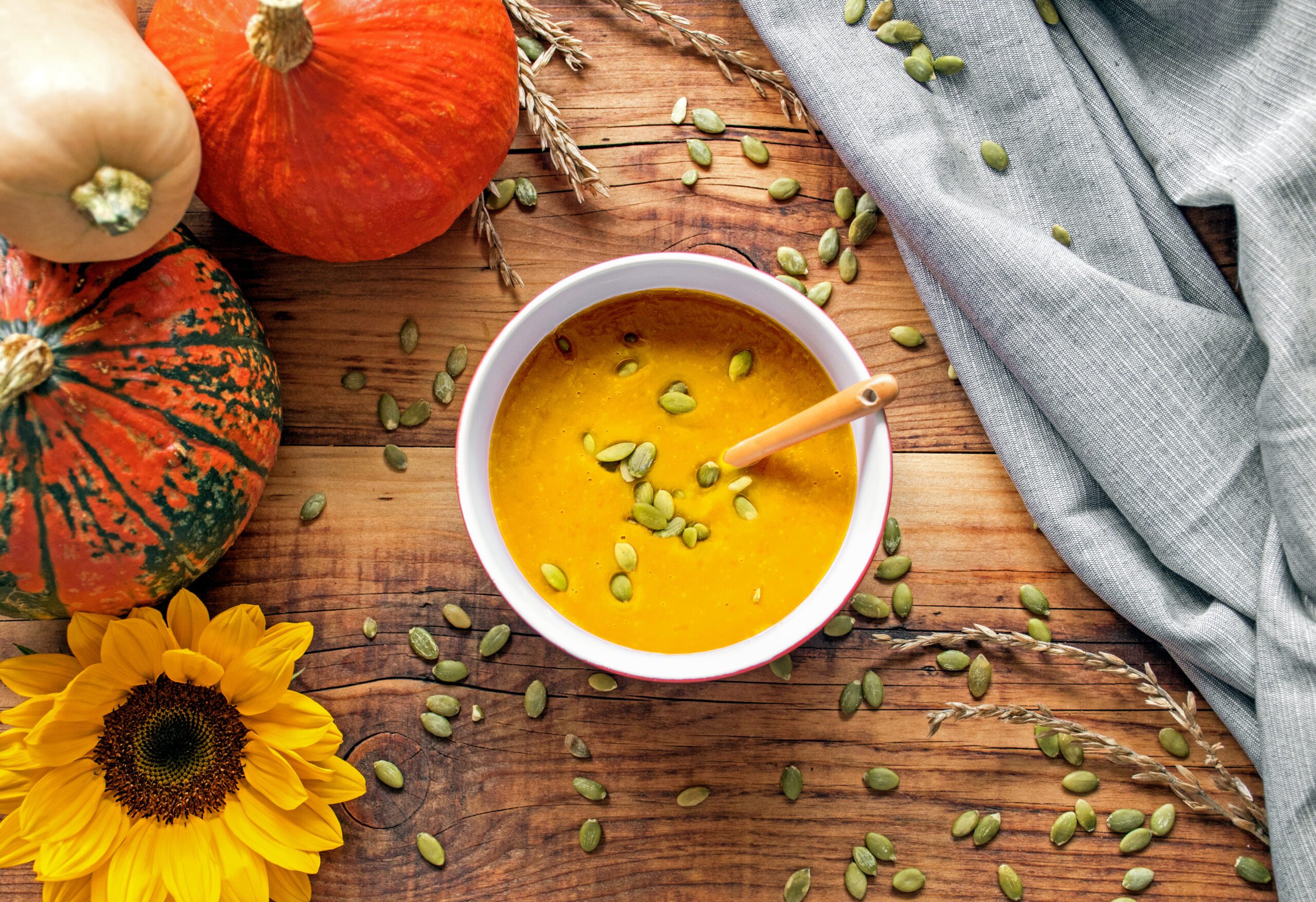
Butternut Squash Soup
Here’s a simple and flavorful recipe for butternut squash soup:
Ingredients:
- 1 large butternut squash (about 2-3 pounds), peeled, seeded, and cubed
- 1 medium onion, chopped
- 2 cloves garlic, minced
- 1 large carrot, peeled and chopped
- 1 large apple, peeled, cored, and chopped (optional, for a hint of sweetness)
- 4 cups vegetable or chicken broth
- 1 cup water (optional, if you prefer a thinner soup)
- 1 teaspoon ground cinnamon
- ½ teaspoon ground nutmeg
- ½ teaspoon ground ginger
- Salt and pepper to taste
- 2 tablespoons olive oil
- 1 cup coconut milk or heavy cream (optional, for a creamy texture)
- Fresh herbs for garnish (optional, like thyme or parsley)
Instructions:
- Prepare the Vegetables:
- Preheat your oven to 400°F (200°C). Toss the cubed butternut squash with 1 tablespoon of olive oil, salt, and pepper. Spread it on a baking sheet and roast for 25-30 minutes, until tender and slightly caramelized.
- While the squash is roasting, heat the remaining 1 tablespoon of olive oil in a large pot over medium heat. Add the chopped onion, carrot, and apple (if using), and sauté for about 5-7 minutes, until softened.
- Add Garlic and Spices:
- Add the minced garlic, cinnamon, nutmeg, and ginger to the pot. Sauté for another 1-2 minutes until fragrant.
- Combine and Cook:
- Add the roasted butternut squash to the pot, along with the vegetable or chicken broth. Bring to a boil, then reduce the heat and simmer for about 15-20 minutes to allow the flavors to meld together.
- Blend the Soup:
- Remove the pot from heat. Using an immersion blender, blend the soup until smooth. If you don’t have an immersion blender, you can transfer the soup in batches to a regular blender.
- If the soup is too thick, you can add a cup of water or more broth to reach your desired consistency.
- Add Cream (Optional):
- If you prefer a creamier soup, stir in the coconut milk or heavy cream. Heat the soup gently until warmed through, but avoid bringing it to a boil if using cream to prevent curdling.
- Season and Serve:
- Taste and adjust the seasoning with more salt, pepper, or spices if needed.
- Ladle the soup into bowls and garnish with fresh herbs if desired.
Serving Suggestions:
- Serve the soup with a drizzle of olive oil, a dollop of sour cream, or a sprinkle of toasted seeds or nuts.
- Pair with toasted bread or a side salad for a complete meal.
This butternut squash soup is comforting and perfect for chilly days at Kiefer Campground!
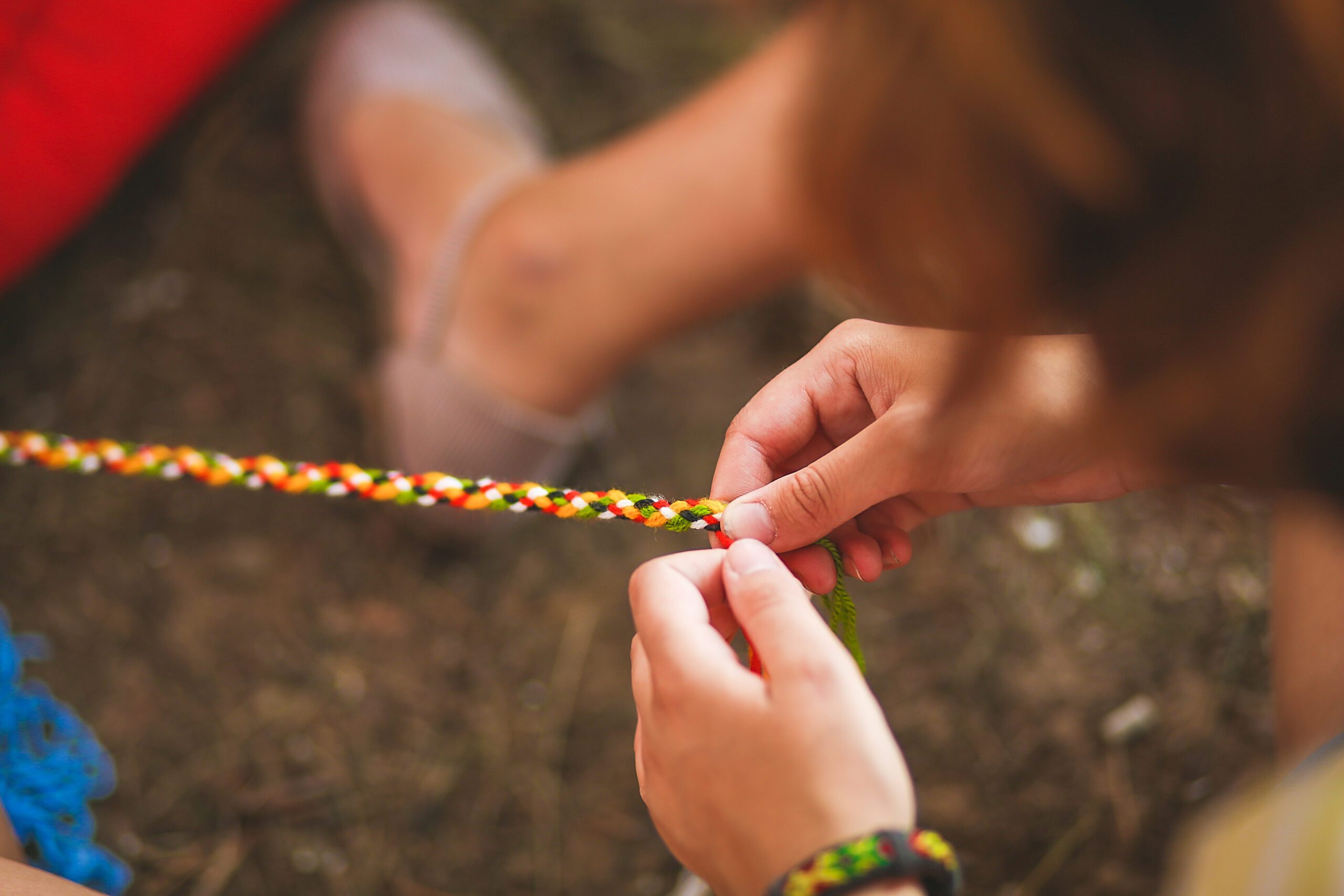
How to Make Paracord Survival Bracelets
Making a paracord survival bracelet is a fun and practical project that can come in handy in various outdoor situations. Here’s a step-by-step guide to making your own paracord bracelet:
Materials Needed:
- Paracord (7-10 feet, depending on wrist size and bracelet pattern)
- Buckle or shackle (optional, but recommended for ease of wear)
- Scissors
- Lighter (to melt and seal the ends of the paracord)
- Tape measure or ruler
Instructions:
- Measure Your Wrist:
- Use a tape measure to measure your wrist. Add about 1-2 inches to this measurement to ensure the bracelet isn’t too tight.
- Prepare the Paracord:
- Cut the paracord to the desired length (7-10 feet is typically sufficient for most bracelets).
- Use the lighter to carefully melt the ends of the paracord to prevent fraying. Be cautious not to burn yourself.
- Attach the Buckle:
- If using a buckle, fold the paracord in half and push the folded end through one side of the buckle.
- Pull the loose ends of the paracord through the loop created by the folded end and tighten to secure the buckle.
- Thread the loose ends of the paracord through the other side of the buckle. Adjust the length so it fits around your wrist with the added extra length for comfort.
- Set Up the Bracelet:
- With the buckle attached and the paracord threaded through both ends, you should have two working strands of paracord.
- Arrange the paracord so that you have an equal amount of length on each side of the center loop.
- Begin Weaving (Cobra Knot):
- Left Strand Over: Take the left strand and place it over the center strands.
- Right Strand Over and Through: Take the right strand, place it over the left strand, then under the center strands, and through the loop created by the left strand.
- Tighten: Pull both strands to tighten the knot up to the buckle.
- Continue Weaving:
- Repeat the knot, alternating sides each time. For example, after the left strand goes over first, the next knot will start with the right strand going over.
- Continue this pattern until you reach the end of the bracelet near the buckle or desired length.
- Finish the Bracelet:
- Once you’ve reached the end, trim the excess paracord, leaving about 1/4 inch.
- Use the lighter to melt the trimmed ends and press them down (using the lighter’s metal or another tool) to secure them and prevent fraying.
- Test the Fit:
- Close the buckle and test the bracelet on your wrist to ensure it fits comfortably. Adjust as needed before finishing the ends.
Tips:
- Experiment with Patterns: Once you’re comfortable with the basic cobra knot, try other patterns like the king cobra, fishtail, or dragon’s tongue for a different look.
- Add a Keychain or Carabiner: For additional functionality, you can attach a small keychain or carabiner to the bracelet.
- Use Multiple Colors: Combine different colors of paracord for a more vibrant and personalized bracelet.
By following these steps, you’ll create a practical and stylish survival bracelet that can be unraveled and used in emergency situations, making it a great addition to your camping supplies while staying at Kiefer Campgrounds!

Fatso’s Famous Pizza
Did you know that there is a new pizza restaurant called Fatso’s Famous Pizza? This new pizza restaurant is located at our very own Camp Lakewood Campground in Effingham, Illinois. This new restaurant is open from 11 am to 8 pm every day, so it is always available for all of your pizza needs!
Offering on-site dining or takeout, Fatso’s Famous Pizza makes camping at Camp Lakewood Campground that much easier! You don’t have to worry about packing meals or even leaving the campground to get delicious food! Not a camper but still want to try Fatso’s Famous Pizza? Don’t worry, our pizza is also available to the public, so you don’t have to be a camper to be able to order!
Menu
I bet you’re wondering what Fatso’s Famous Pizza has to offer? Let’s get into a detailed list of everything our Menu has to offer!
Starters
- Breadsticks
- Garlic Cheese Bread
- Fatso’s Famous Chicken Nachos
- Two Topping Flatbread
- Wings
Custom Pizza Options
- 9” 12” or 16” Pizza
- 6 Sauce Options
- 8 Meat Topping Choices
- 9 Veggie Topping Choices
Specialty Pizzas: 9”, 12”, or 16”
- A Walk In the Park
- No Forking Way
- Garloholic
- The Chicken Ranch
- Hot Mother Clucker
- Sweet & Zesty Chicken
- Macho Nacho
- Deluxe A Million
- Bianca Throw Down
- Bacon Cheeseburger Paradise
- Sausagefest
- The Frankfurter
- Fill Er Up with Meat
Dessert
- Kolin’s Cookie Monster Delight
- Monkey Bread
Daily Pizza Special:
We also currently have a daily special that is $11.50 and includes everything listed below!
- One 9” Pizza
- 2 Breadsticks
- One Drink (Excludes Gatorade & Glass Bottles)
Hungry Yet?
Give us a call at 217-347-7977 or stop by in person at 1217 West Rickelman Ave in Effingham, IL to place your order! We are open every day from 11 am to 8 pm, so you have plenty of time in your day to stop by and try a slice! Fatso’s Famous Pizza’s goal is to provide the surrounding area with a delicious and convenient food option. Kiefer Campgrounds is grateful to be able to share and provide this new opportunity with the local community.
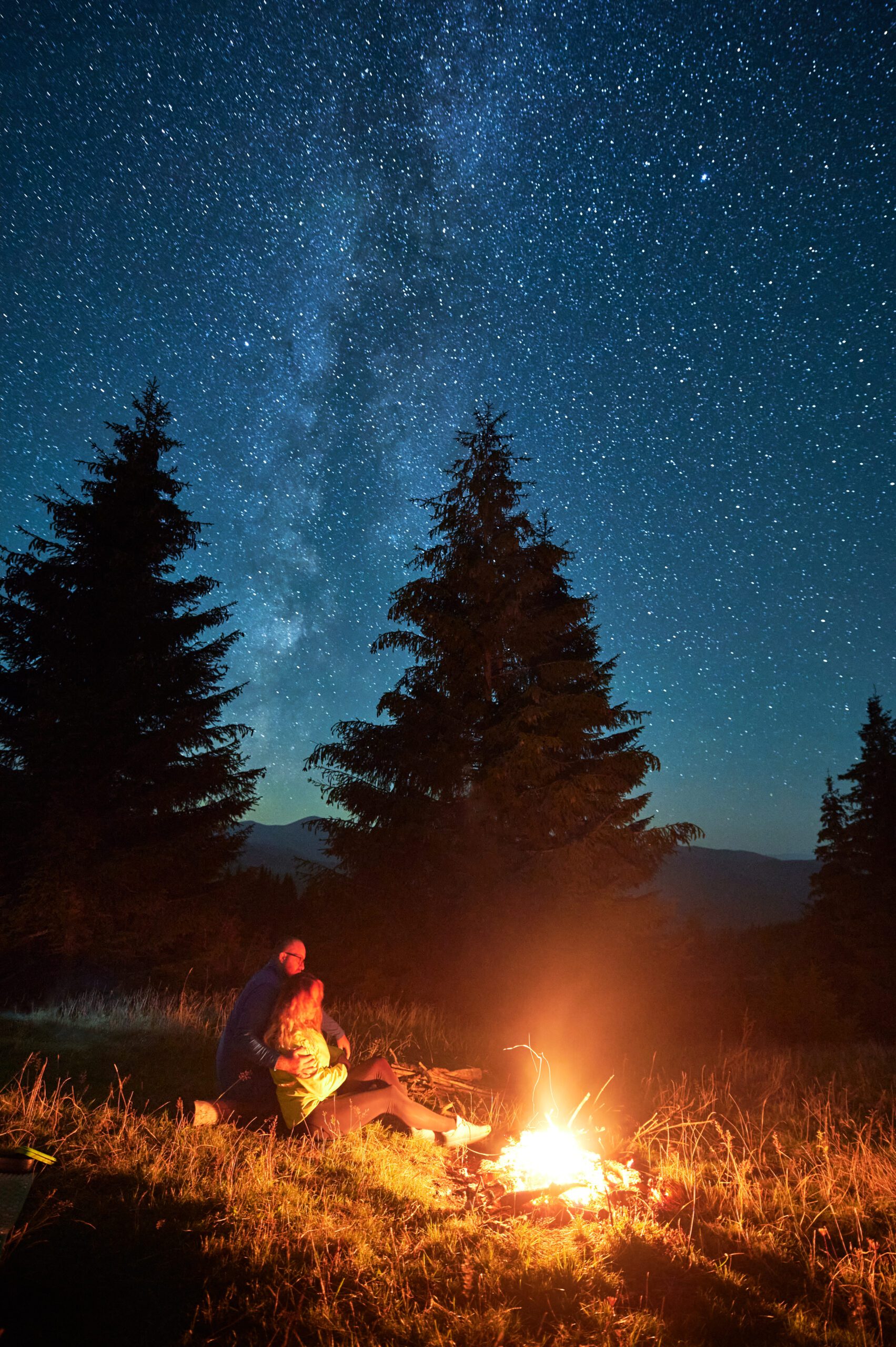
How to Stargaze and What Constellations to Look For
Stargazing is a wonderful activity that allows you to connect with the night sky and explore the universe. Here’s a guide on how to stargaze and some constellations to look for at night:
How to Stargaze
1. Find a Good Location:
- Dark Sky: Choose a location away from city lights and light pollution. Rural areas, parks, or designated dark-sky locations are ideal.
- Clear Sky: Check the weather forecast for clear skies. Clouds can obstruct your view of the stars.
2. Prepare Yourself:
- Dress Warmly: Even in summer, nights can get chilly. Dress in layers to stay warm.
- Bring a Blanket or Chair: A comfortable blanket or reclining chair can make stargazing more enjoyable.
3. Use the Right Tools:
- Star Maps and Apps: Use a star map or stargazing app (like SkyView, Star Walk, or Stellarium) to help identify constellations and stars.
- Red Flashlight: A flashlight with a red filter helps you see in the dark without ruining your night vision.
- Binoculars or Telescope: While not necessary, binoculars or a telescope can enhance your stargazing experience.
4. Adjust Your Eyes:
- Night Vision: Give your eyes 15-20 minutes to adjust to the darkness. Avoid looking at bright lights during this time.
5. Identify Key Stars and Constellations:
- Start by locating some key stars and constellations, which can serve as reference points.
Constellations to Look For
Here are some well-known constellations that are relatively easy to spot for beginner stargazers:
1. Ursa Major (The Great Bear):
- Location: Northern Hemisphere.
- Features: Contains the Big Dipper, an asterism of seven bright stars. The two stars at the end of the Big Dipper’s “bowl” point towards Polaris, the North Star.
2. Ursa Minor (The Little Bear):
- Location: Northern Hemisphere.
- Features: Contains Polaris, the North Star, which is located at the end of the Little Dipper’s handle.
3. Orion (The Hunter):
- Location: Visible in both hemispheres; best seen in winter in the Northern Hemisphere.
- Features: Recognizable by Orion’s Belt, a line of three bright stars. Look for the bright stars Betelgeuse and Rigel.
4. Cassiopeia (The Queen):
- Location: Northern Hemisphere.
- Features: Resembles a “W” or “M” shape, depending on its position in the sky.
5. Cygnus (The Swan):
- Location: Northern Hemisphere; best seen in summer.
- Features: Contains the Northern Cross, an asterism of stars that form a cross shape.
6. Scorpius (The Scorpion):
- Location: Southern Hemisphere and low in the sky in the Northern Hemisphere.
- Features: Recognizable by its long, curving “tail” and the bright star Antares, which represents the scorpion’s heart.
7. Leo (The Lion):
- Location: Visible in both hemispheres; best seen in spring in the Northern Hemisphere.
- Features: Look for a backward question mark or sickle shape, which forms the lion’s head.
Additional Tips
- Learn the Seasonal Constellations: Different constellations are visible at different times of the year. Learn the seasonal constellations to know what to look for.
- Use the Moon as a Guide: The moon can help you navigate the night sky, but try stargazing during a new moon for the darkest skies.
- Join a Stargazing Group: Many communities have astronomy clubs or stargazing groups. Joining one can provide valuable knowledge and access to telescopes.
Stargazing is a relaxing and awe-inspiring activity that can be enjoyed alone or with others. With a little preparation and knowledge, you’ll be able to identify constellations and enjoy the beauty of the night sky while staying at Kiefer Campgrounds!
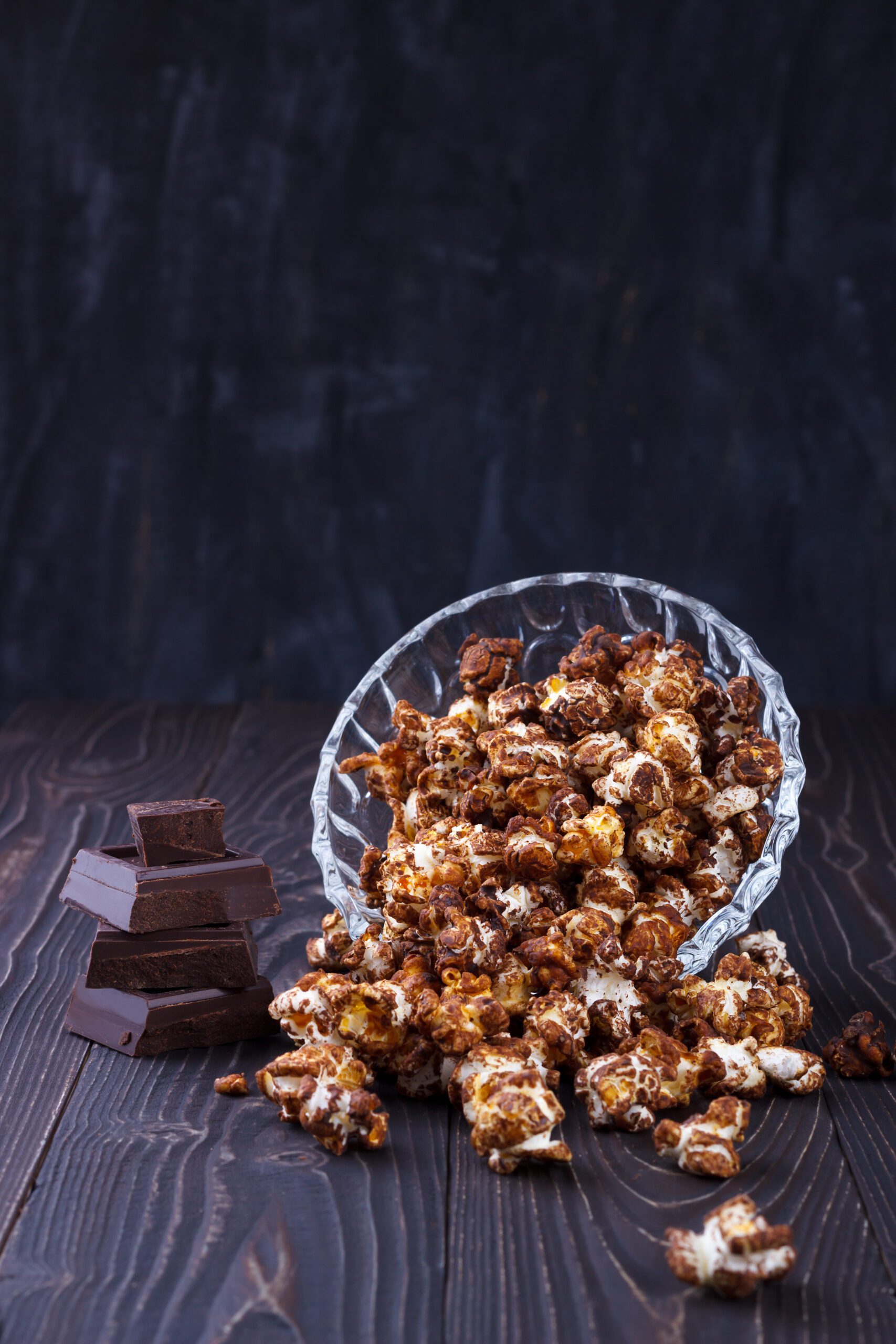
Moose Munch Recipe
Moose Munch is a delightful snack known for its combination of caramel-covered popcorn, nuts (often almonds or cashews), and sometimes chocolate drizzle. It’s a popular treat that’s sweet, salty, and crunchy all at once, perfect for snacking while camping!
Ingredients:
- 8 cups popped popcorn (about 1/2 cup unpopped kernels)
- 1 cup mixed nuts (such as almonds, cashews, or peanuts)
- 1 cup brown sugar
- 1/2 cup unsalted butter
- 1/4 cup light corn syrup
- 1/2 teaspoon salt
- 1/4 teaspoon baking soda
- 1/2 teaspoon vanilla extract
- 1/2 cup chocolate chips (optional)
Instructions:
- Preheat and Prep: Preheat your oven to 250°F (120°C). Line a large baking sheet with parchment paper or a silicone baking mat.
- Prepare Popcorn and Nuts: Place the popped popcorn and mixed nuts in a large mixing bowl. Toss to combine and then set aside.
- Make Caramel Sauce: In a medium saucepan over medium heat, melt the butter. Stir in the brown sugar, corn syrup, and salt. Cook, stirring constantly, until the mixture comes to a boil. Let it boil without stirring for 4-5 minutes.
- Add Baking Soda and Vanilla: Remove the saucepan from heat and quickly stir in the baking soda and vanilla extract. The mixture will foam up.
- Coat Popcorn and Nuts: Pour the hot caramel sauce over the popcorn and nuts in the mixing bowl. Use a spatula to gently toss and coat everything evenly.
- Bake: Spread the coated popcorn and nuts onto the prepared baking sheet in an even layer. Bake in the preheated oven for 45-60 minutes, stirring every 15 minutes, until the caramel coating is crispy and golden brown.
- Cool: Remove from the oven and let cool completely on the baking sheet. The caramel coating will harden as it cools.
- Optional Chocolate Drizzle: Melt the chocolate chips in the microwave or over a double boiler until smooth. Drizzle the melted chocolate over the cooled Moose Munch. Let the chocolate set before breaking the Moose Munch into pieces.
- Serve and Store: Once completely cooled and set, break the Moose Munch into clusters or pieces. Store in an airtight container at room temperature for up to 1 week.
Enjoy your homemade Moose Munch as a delicious snack or gift it to friends and family for a special treat to enjoy while camping at Kiefer Campgrounds!
Family owned and operated, Kiefer Campgrounds strive to offer you the best rates for a comfortable location with outstanding service, and spotless facilities. When you stay in one of our parks, you are no longer just a happy camper, but a part of our family! We are most certain you will enjoy your stay with us. Pick your favorite location and book your spot now before it’s too late! You’ll be happy you did!
